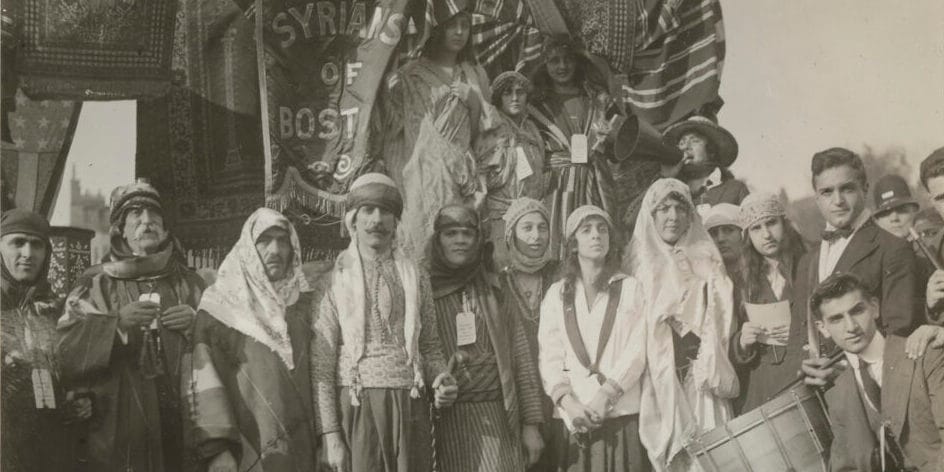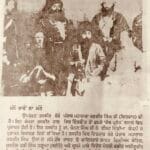Hey there, history buffs! Get ready to dive into the fascinating world of the Ottoman Empire. We’ll embark on an incredible adventure, uncovering the secrets and stories of one of history’s most influential empires.
Imagine time-traveling back to the early days of the Ottoman Empire, witnessing its humble beginnings as a small tribe. Picture its remarkable transformation into a mighty superpower, shaping the destiny of the world. We’ll encounter legendary rulers, witness epic battles, and explore the amazing culture that made the Ottoman Empire so unique.
Buckle up for an unforgettable journey through history, uncovering the rise, reign, and eventual fall of one of the world’s most captivating empires.
History of the Ottoman Empire Podcast
Ever wondered about the Ottoman Empire, the enduring empire that left a lasting impact on the world? It’s a captivating tale filled with triumphs and defeats, powerful rulers, and a unique fusion of cultures.
If you’re short on time or simply prefer listening to reading, podcasts about the Ottoman Empire’s history offer an immersive experience. Consider them audio documentaries, where experts share their knowledge, dissecting significant events, and breathing life into this bygone era.
One of the most appealing aspects of these podcasts is their accessibility. Casual listeners can relax and enjoy the captivating narratives, while history enthusiasts can delve into the intricate details and analysis. Moreover, you can listen anywhere—during your commute, at the gym, or while doing chores—making learning both convenient and enjoyable.
These podcasts often go beyond the confines of textbooks, providing a more nuanced perspective. You might uncover how technology fueled the empire’s expansion, the experiences of diverse religious communities within its borders, or the complex relationship between the Ottomans and Europe. It’s like gaining behind-the-scenes access, deepening your understanding of this multifaceted civilization.
If you’re intrigued by the Ottomans and seek an engaging and informative way to learn more, exploring Ottoman Empire history podcasts is highly recommended. You might be surprised by what you unearth!
How Accurate is Rise of the Ottoman Empire on Netflix?
After immersing yourself in the captivating world of “Rise of the Ottoman Empire,” you might find yourself questioning the historical accuracy of the series. It’s a common curiosity we share after being enthralled by historical dramas.
The good news is that the series generally remains faithful to major historical events. The fall of Constantinople, a pivotal moment in history, is portrayed with a commendable degree of accuracy. The show doesn’t shy away from depicting the brutality of warfare during that period.
However, it’s important to acknowledge that certain aspects of the series involve creative interpretation. Historians lack comprehensive accounts for every individual and event, leaving gaps in our understanding. For instance, the series depicts Mehmed executing Çandarlı Halil Pasha, but the exact motivations behind this decision remain a subject of debate among historians. While the show offers one possible interpretation, it’s crucial to remember that definitive answers remain elusive.
Speaking of Mehmed, the series delves into his character, offering a glimpse into the complexities of this historical figure. He is portrayed as a nuanced individual shaped by an intense upbringing, suggesting that his experiences as a young ruler likely influenced his decisions as Sultan. This portrayal encourages viewers to contemplate the profound impact of personal experiences on historical figures.
It’s worth noting that the series primarily presents the Ottoman perspective, which is understandable given its focus on the empire’s rise. However, exploring the Byzantine perspective would undoubtedly provide a richer understanding of this epic clash.
Overall, “Rise of the Ottoman Empire” successfully blends entertainment with historical accuracy. It’s crucial to remember that it is a dramatization, not a documentary. Therefore, enjoy the show’s captivating narrative, but consider supplementing your viewing experience with additional research to delve deeper into this fascinating historical period.
Is The Ottoman Series Based on a True Story?
If you’re captivated by “The Ottoman” and its enthralling tale of conquest, you might be wondering about its historical authenticity. The answer, like many historical dramas, is that it’s a blend of fact and fiction.
The show captures the essence of the events leading up to the Ottoman conquest of Constantinople in 1453. This momentous event altered the course of history, and the series effectively conveys the drama and tension of that era.
However, it’s essential to remember that “The Ottoman,” like many historical dramas, employs creative license to enhance the narrative’s entertainment value.
The portrayal of Mehmed II, the ambitious Sultan who led the Ottomans, exemplifies this approach. The series emphasizes his burning desire to conquer Constantinople and expand his empire. While historians generally agree on Mehmed’s ambitions, the series likely embellishes certain aspects of his personality and actions for dramatic effect.
When depicting the siege of Constantinople, the series remains largely faithful to historical accounts. Viewers witness the impressive military tactics and advanced technology employed by the Ottomans, including those massive cannons capable of breaching city walls. The show also highlights the incredible resilience of the Byzantines defending their city against overwhelming odds.
It’s crucial to acknowledge that our understanding of history is constantly evolving as new research emerges. While “The Ottoman” draws from historical sources, there are ongoing debates and unresolved questions surrounding this period. Different historians may have varying interpretations of events or emphasize certain aspects over others.
Therefore, while “The Ottoman” may not be an entirely accurate historical documentary, it serves as a captivating introduction to a pivotal moment in history. The series captures the spirit of the era, the ambition of Mehmed II, and the sheer scale of the siege of Constantinople. Viewers should approach the dramatizations with a discerning eye, keeping in mind that history is often more complex than portrayed on screen.
What is the Background History of the Ottoman Empire?
Picture a group of resilient Turkish tribes residing in northwestern Anatolia in the late 1200s. Led by the ambitious Osman I, they embarked on a series of conquests, laying the foundation for the Ottoman Empire.
Fast forward approximately 150 years, and the Ottomans had become a formidable force. Their conquest of Constantinople in 1453 solidified their status as a major power, and their empire eventually stretched across three continents, encompassing southeastern Europe, the Middle East, and parts of North Africa.
The Ottomans’ success stemmed not only from their military prowess but also from their shrewd governance. Rather than imposing their customs and beliefs on conquered populations, they adopted and adapted local traditions and institutions. This inclusive approach resulted in a rich tapestry of Turkish, Islamic, and Byzantine influences in their culture, laws, and administration.
This fusion of influences contributed to the Ottoman Empire’s emergence as a vibrant hub for trade and culture. Envision bustling marketplaces, stunning art and architecture, and groundbreaking advancements in various fields. The empire’s legacy can still be observed in those regions today.
It’s important to remember that our understanding of history is an ongoing process. New discoveries challenge existing interpretations, and historians engage in lively debates about the nuances of the past. While we have a good grasp of the Ottoman Empire’s story, there’s always more to learn.
Who Was the Most Successful Ottoman Ruler?
Identifying the most successful Ottoman ruler is no easy feat, as the empire boasted a series of remarkable leaders. However, when considering the ruler who left the most profound mark, Suleiman the Magnificent stands out.
Suleiman inherited a powerful empire and propelled it to new heights during his reign. He expanded the empire’s territory considerably, extending its reach from Hungary to the Persian Gulf.
His success wasn’t solely due to military might. Suleiman recognized the importance of a strong foundation for a thriving empire. He established a comprehensive legal system, ensuring order and stability. This, in turn, bolstered the economy, facilitating trade and prosperity.
Beyond his military and administrative achievements, Suleiman was a fervent patron of the arts and sciences. Under his rule, the Ottoman Empire experienced a golden age of cultural flourishing. The construction of the magnificent Suleymaniye Mosque in Istanbul stands as a testament to his legacy.
While other sultans deserve recognition for their contributions, Suleiman’s reign stands out for its remarkable combination of military expansion, cultural flourishing, and effective governance. He solidified the Ottoman Empire’s position as a major world power, and his influence continues to resonate centuries later.
Did Mehmed and Vlad Fight?
In 1462, the Ottoman Sultan, Mehmed II, set his sights on conquering Wallachia, ruled by the defiant Prince Vlad III, also known as Vlad the Impaler. Vlad had forged an alliance with Hungary and refused to pay tribute to the Ottomans, setting the stage for a bitter conflict.
Vlad, known for his brutal tactics, launched a daring nighttime raid on the Ottoman camp at Târgoviște, hoping to assassinate Mehmed. While the attempt failed, it showcased Vlad’s audacity and determination to resist Ottoman encroachment.
Although Vlad’s assassination attempt proved unsuccessful, it instilled fear in the Ottoman army. His reputation for impaling his enemies preceded him, and the psychological impact of his tactics, combined with his scorched-earth policy, forced Mehmed to retreat from Wallachia.
Key Takeaways:
- Mehmed II sought to conquer Wallachia, but Vlad III fiercely resisted Ottoman expansion.
- Vlad’s surprise attack at Târgoviște demonstrated his military cunning.
- Mehmed’s retreat from Wallachia marked a significant setback for the Ottomans.
- Vlad’s scorched-earth and guerrilla tactics proved highly effective against a superior force.
Why Was the Ottoman Empire Failing?
The Ottoman Empire, once a formidable power, experienced a gradual decline due to a confluence of factors.
Military Defeats and Internal Strife
Once renowned for its military might, the Ottoman army suffered a series of defeats, including the Battle of Lepanto and the Siege of Vienna. These losses tarnished the empire’s reputation and exposed vulnerabilities in its military capabilities.
Internally, corruption had taken root, weakening the central government’s authority. Economic struggles further exacerbated these issues, hampering the empire’s ability to recover from military setbacks.
Falling Behind in a Changing World
The Ottomans struggled to adapt to a rapidly changing world. As European powers explored new trade routes and embraced technological advancements, the Ottomans lagged behind. This stagnation left them vulnerable to competition from more technologically advanced rivals.
Growing Unrest and External Pressures
The empire’s vast and diverse population, while once a source of strength, became increasingly difficult to govern. Growing unrest and nationalist sentiments fueled movements for independence within the empire.
External pressures mounted as European powers, seeking to expand their empires, exploited the Ottoman Empire’s weaknesses. They meddled in Ottoman affairs, exacerbating internal divisions and chipping away at the empire’s territory.
Lessons from Decline
The decline of the Ottoman Empire serves as a cautionary tale about the importance of adaptability, internal unity, and the perils of falling behind in a rapidly evolving world. Historians continue to study this period, uncovering new insights into the complex factors that contributed to the empire’s demise.
Discover the fascinating history of the nunchaku, an ancient Okinawan weapon used in martial arts.
Uncover the captivating history of the Olde Pink House Savannah GA, a renowned restaurant and landmark steeped in centuries of charm and intrigue.
Delve into the history of the pupusa, a traditional Salvadoran dish that has captured the hearts and taste buds of food lovers around the world.
- Unveiling the Enigma: Mansoureh Khojasteh Bagherzadeh’s Public Appearances & Private Life in Iran - July 18, 2025
- Unveiling the Mystery: Mansoureh Khojasteh Bagherzadeh’s Husband: A Rare Glimpse into a Private Life - July 18, 2025
- Unveiling Masoud Khamenei’s Mother: Power, Influence, and Iran’s Future - July 18, 2025
















